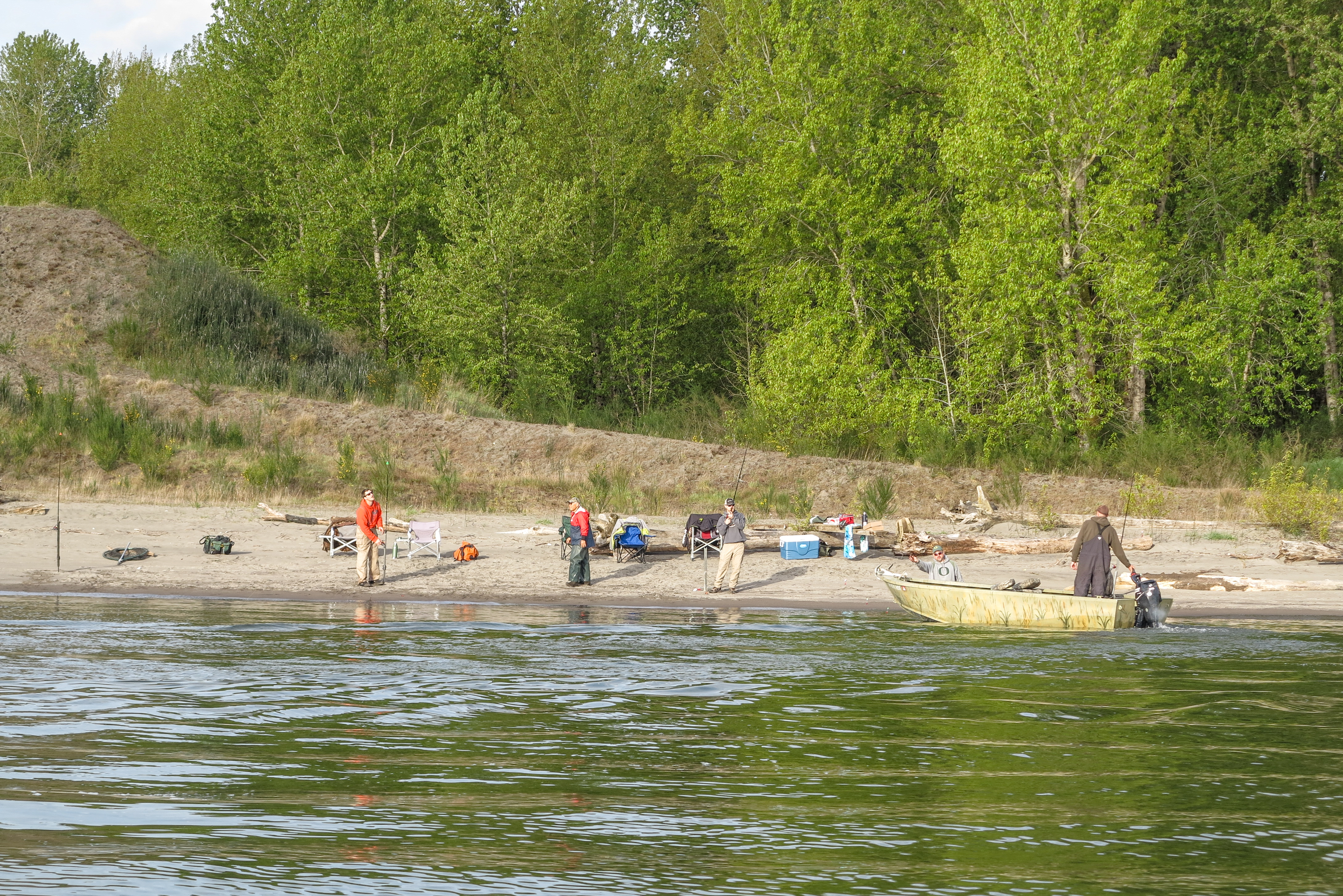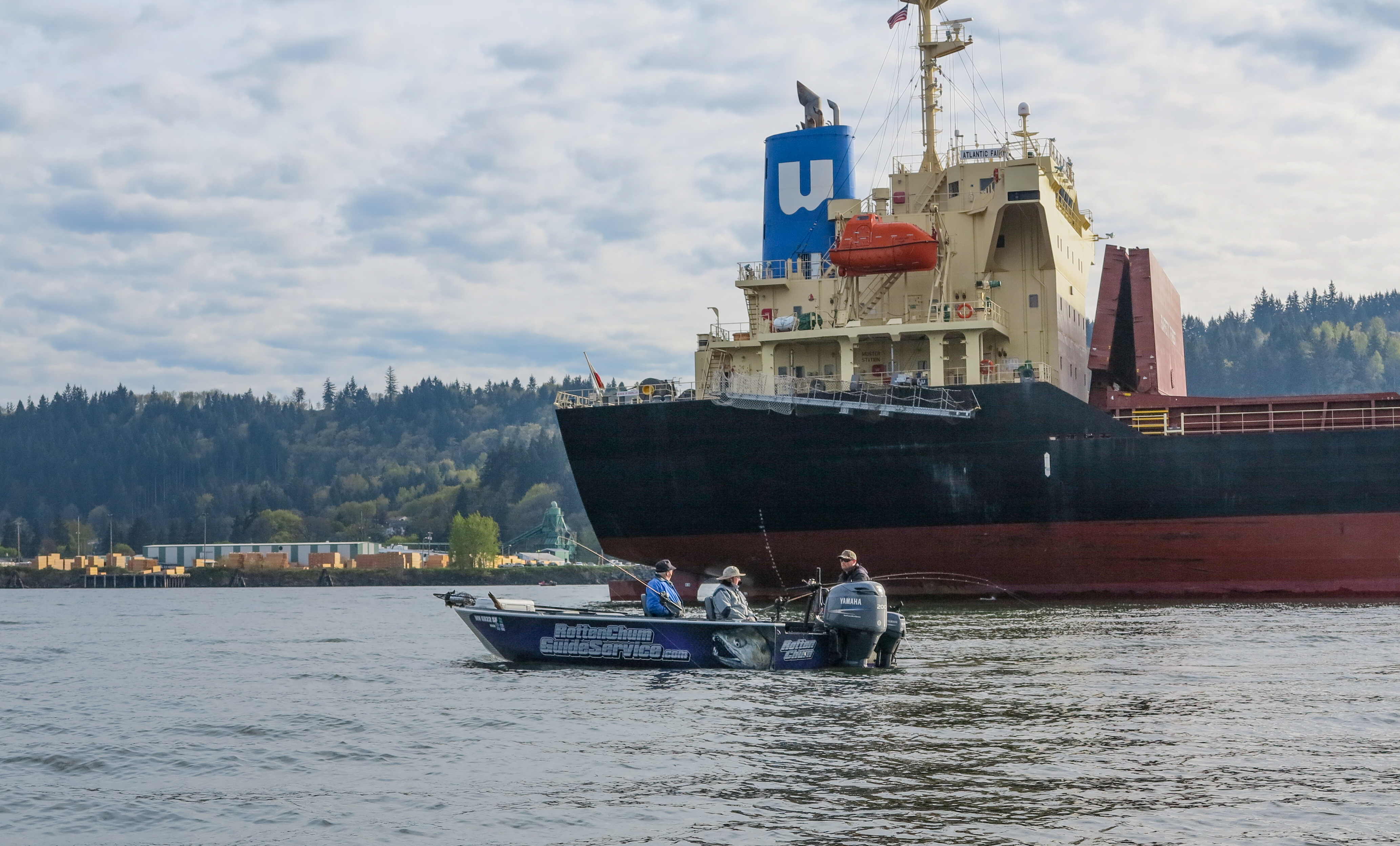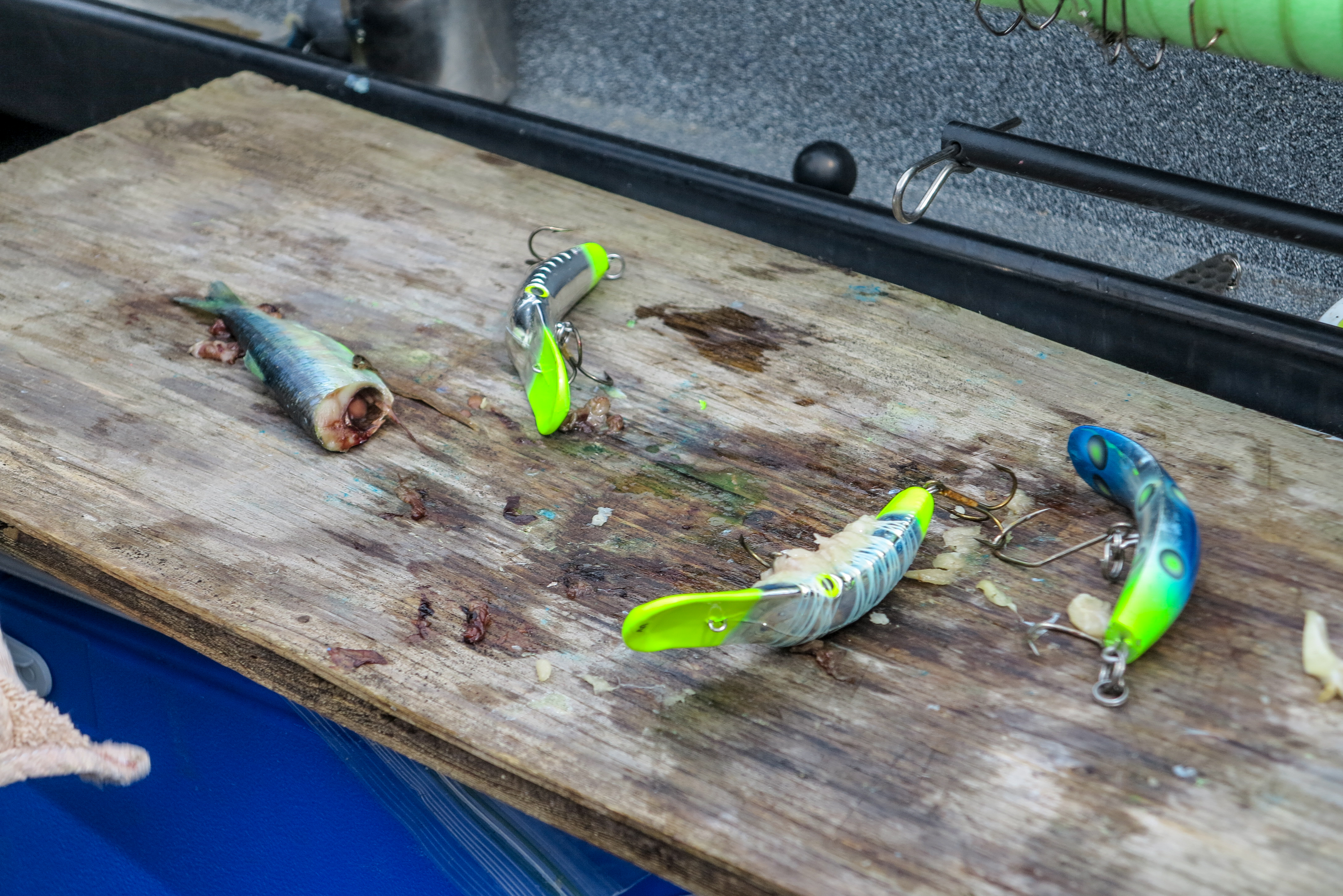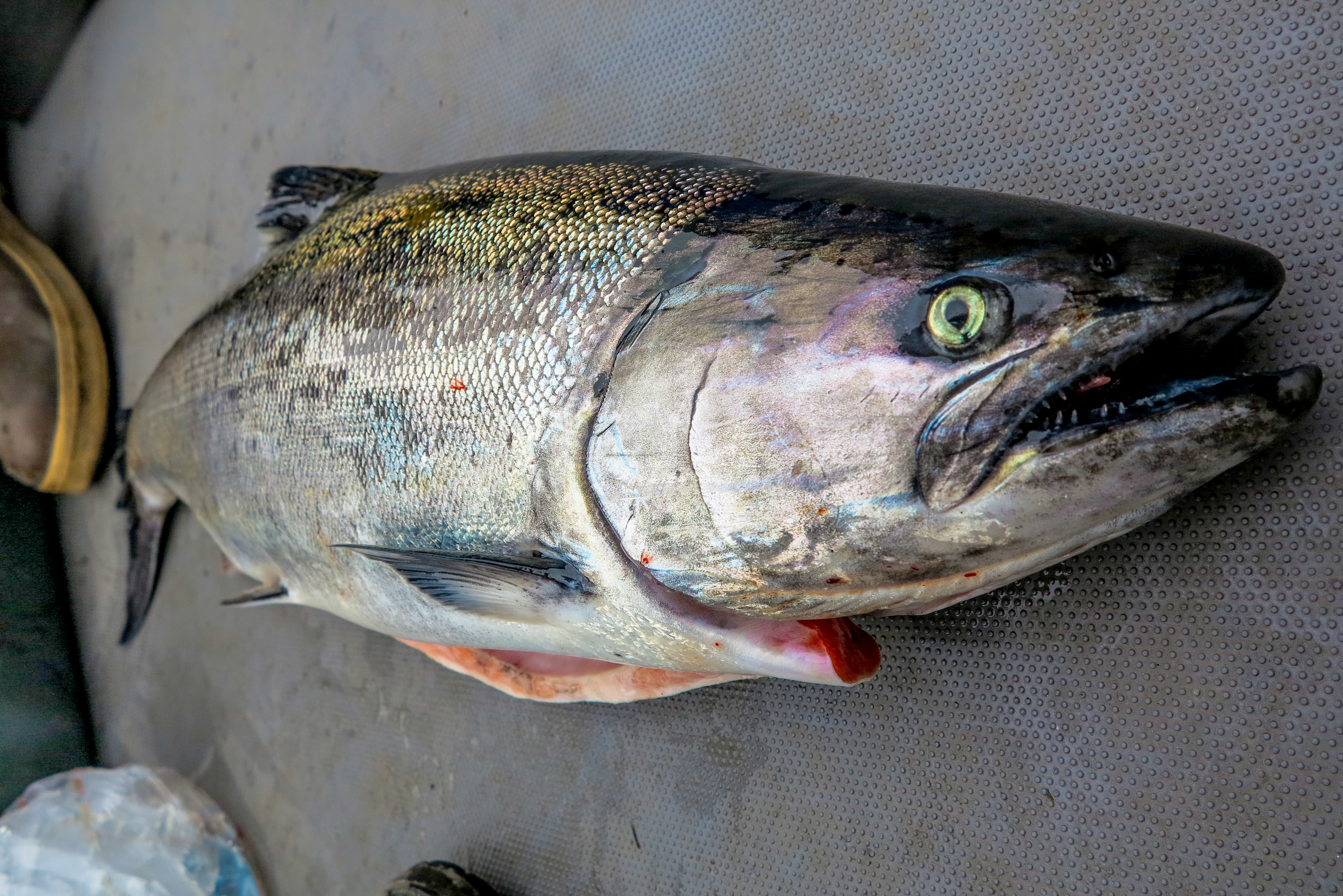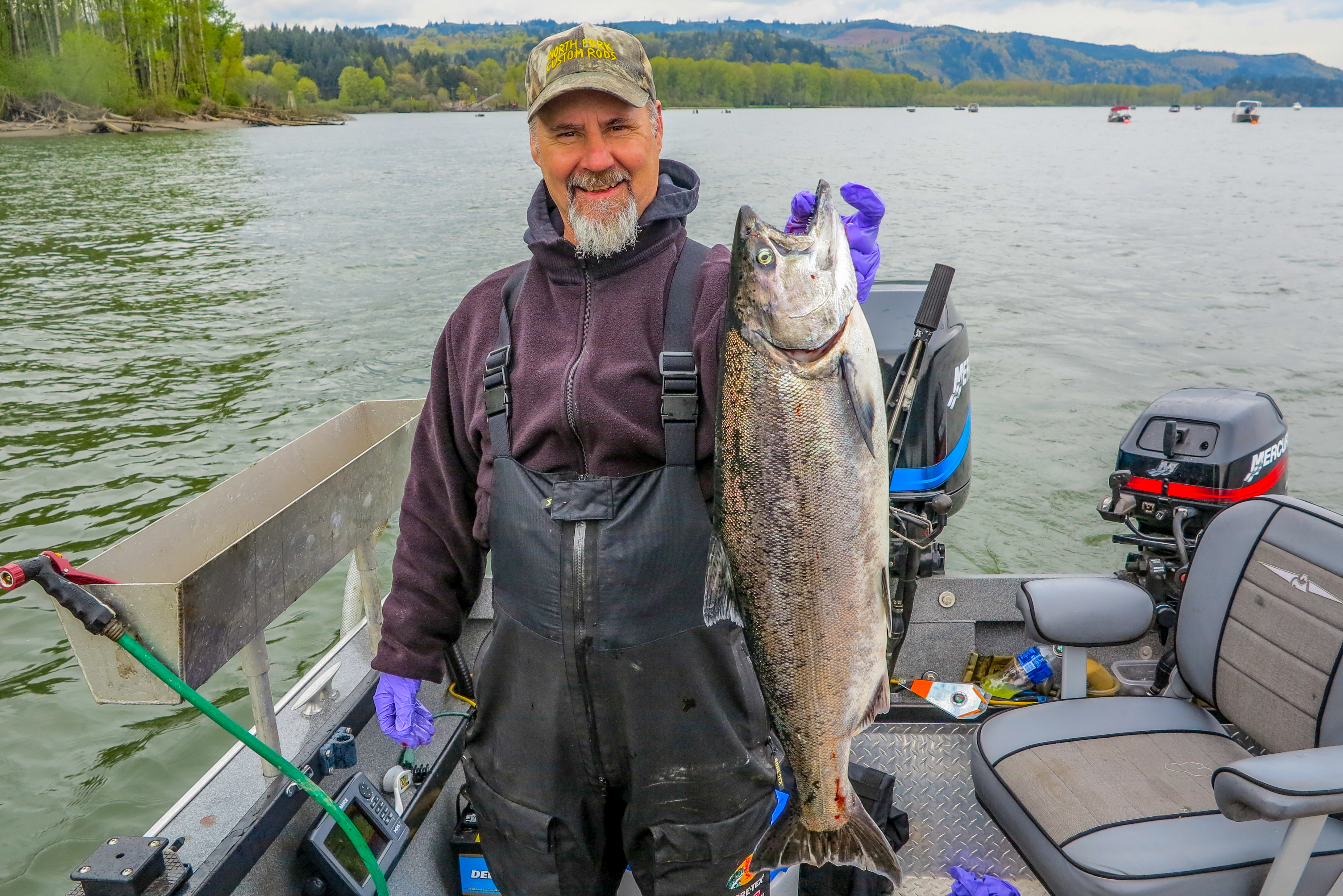Search
Latest Articles
Lower Columbia Springers at Kalama
by Jason Brooks, March 01, 2018
Being in the lower Columbia River system where the tides still flush in and out with the pull of the moon, Kalama, Washington’s port becomes very busy as soon as the first Springer is reported to be headed up river. The Spring Chinook is likely the most sought after of all salmon runs in the Pacific Northwest. With their high oil content and firm flesh, silver sides and hard fight the Springer is a trophy fit for dinner no matter the size of the fish. Because the Spring Chinook is so sought after the fishery is subject to intermittent openings and closures depending on the run predictions and commercial fisheries in the area. What makes this fishery different from others is the proximity to the fishing grounds from the launch. It is also home to the largest grain silo on the west coast and a major hub for large cargo ships. Crossing train tracks to get to the launch you will see an active port deep in history.
First established around 1870 when the Northern Pacific Railroad pushed west and settled along the shores of the Columbia at Kalama, Washington .The port soon became a major shipping location. Today it is one of the main employers for the local area and boats share the water with large ships. Portland is about 30 miles to the south and Seattle 120 to the north making this a popular marina during the short Springer season.
The Port of Kalama offers a multi-lane boat launch and what seems like ample parking unless you get there during a hot bite and an hour late. With the launch and docks protected from a breakwater small craft can easily head out to fish from here. This is the Columbia so checking the weather and wind conditions are a must. If for some reason the conditions worsen then it is a short ride back to the protected water.
Not only will small craft be able to fish here but also a variety of other boats including pleasure yachts and ski boats. The deep water shipping lanes are right next to the best fishing areas and you better make sure to get out of the big vessels way. The warning sound of a fog horn is an embarrassing badge of dishonor at the Port. The idea is to cross the main channel to a long sand flat at the edge of the center island, aptly named Sand Island.
Trolling is the main way to fish just like upriver near the Portland area or downstream near the Astoria and St. Helens bars. A stout rod from 9 to 12 feet spooled with 50 to 65 pound braid on a quality reel is a must. A sliding dropper about 8 inches to the weight up to 16 ounces is often needed if you plan on fishing the entire outgoing tide. Otherwise 8 to 12 ounces and even lighter during the flood will get the job done. Using a Yakima Bait Company in-line flasher such as the Big Al’s in bright colors to a 48-inch leader tied with twin needle sharp 4/0 Gamakatsu Big River barbless hooks and a tight rolling plug cut herring is all that is needed. Brining the herring and using Pro-Cures Bad Azz Bait Dye, dying them various colors, can help turn on a bite with blue or chartreuse being the most common. Another popular bait is a slow rolling prawn with a blade out front in various orange and green colorations.
The fish are on the move in this part of the river, rarely staging at any one spot. The trolling is done downriver along the edge of Sandy Island. Once you near the bottom of the island, reel up the gear and start the big motor. As you motor back up to the top make sure to stay out of the shipping lanes as the big ships are going faster than you might think and can overtake you quickly. Stay away from the shorelines of the island as well since the shore bound anglers are plunking the sand bar.
The long sandy beaches are great places for a shoreline gathering. Plunkers use small boats to run their lines out to the deep waters and this is why you need to stay out a bit further, near the 30 to 35 feet depths. You don’t want to drag your gear through their plunked lines as you might find your rod yanked out of the holder. Plunkers often use 65 to 80 pound braid and 25 to 30 pound leaders and heavy pyramid weights to keep the baits near the bottom.
A set up will include things such as large spin-n-glows with a chunk of herring or a gob of eggs, a prawn, or even herring wrapped Brad’s KillerFish KF14 or a Yakima Bait Company Mag-Lip 4.5. With the use of a boat to motor out and drop the terminal gear casting isn’t a concern so some leaders will have two or three rigs. A long, 12 foot plus rod is needed for this reason. Once the gear is deployed, sit back and enjoy the scenery while watching the rod or listening for the ringing of the bell.
As the tide starts to turn towards the ocean those that would rather sit on anchor find a travel lane and deploy the buoys. As we trolled along keeping an eye on the depth sounder we noticed several depressions in the sand. With each pass we would mark these spots until we had plotted out a travel lane. The fish will use the drag of the slower water along the bottom and find these troughs and cruise upriver in them. With the outgoing tide we set out the anchor and made sure our boat was on top of the marked lane. Switching from plug cut herring to Mag-Lip 4.5’s and Brad’s KillerFish KF14’s with a tuna belly wrap the rods sat idle in the holders.
Our secret spot wasn’t confidential for long as other boats began to line up around us and the hog line formed. Another had formed about 300 yards below and yet another past it, and so forth all the way down the side of the island. Trolling is still an option but you might have to stay out a bit deeper, on the edge of the shipping channel.
I broke out the binoculars and began watching the boats below us. Soon a net was flying, then another and another. It was only a matter of time before the fish made their way up to us. The boat to our left hooked up first then another boat had a double. Finally our far left rod bent over and once again we just sat and watched it until line started to peel off. This time the hooks stayed and the fish was fought to the boat. A typical 12 pound Springer bound for some hatchery upriver was scooped into the net.
Winds began to kick up and a rain storm was on its way from the west. We had our chances and even had a fish for dinner. It was time to head back to port before the mad dash of boats joined us. Five minutes later we were back in the protected Port of Kalama along with two guide boats that followed us. That is one of the reasons why the Port of Kalama is such a popular place to fish. It is productive for various techniques and on good weather days just about anyone with a boat can fish here. Close to major metropolitan cities and a protected marina to launch from that is only minutes from the fishing grounds. Kalama itself is a small town that caters to the angler with many “Mom and Pop” gas stations and eateries, one of the best is the Kalama Burger Bar with great milkshakes and awesome burgers. If you feel the need to refuel with a cup of coffee then check out Kalama Koffee, another local place that always appreciates business during the fishing season. Just be ready to wait for trains and make sure to stay out of the cargo ships way when fishing at the Port of Kalama.
Jason Brooks hails from North-Central Washington. The son of a fishing guide, Jason is an avid hunter, angler, outdoor photographer and published writer. He resides in Puyallup with his wife and two boys.
